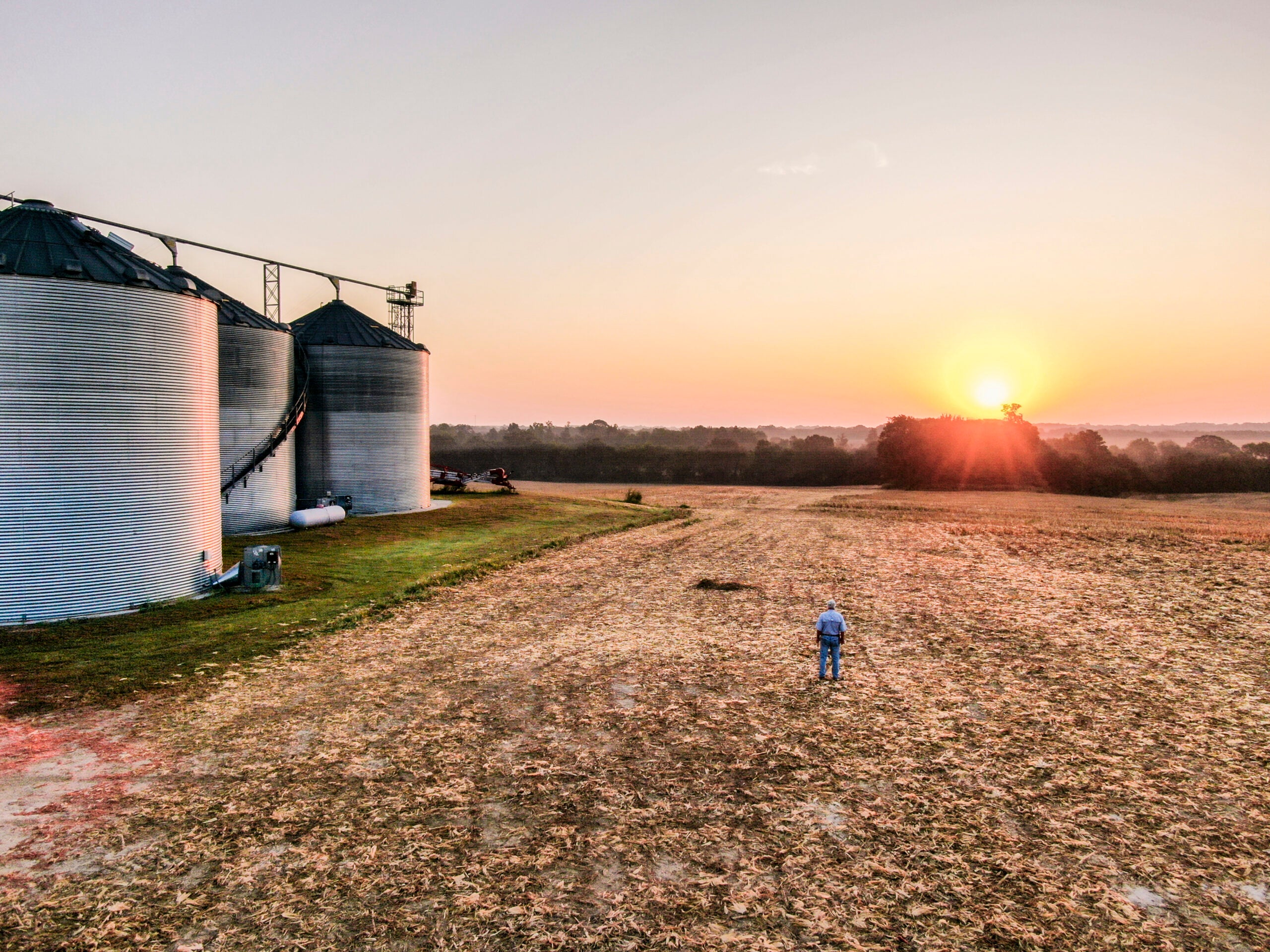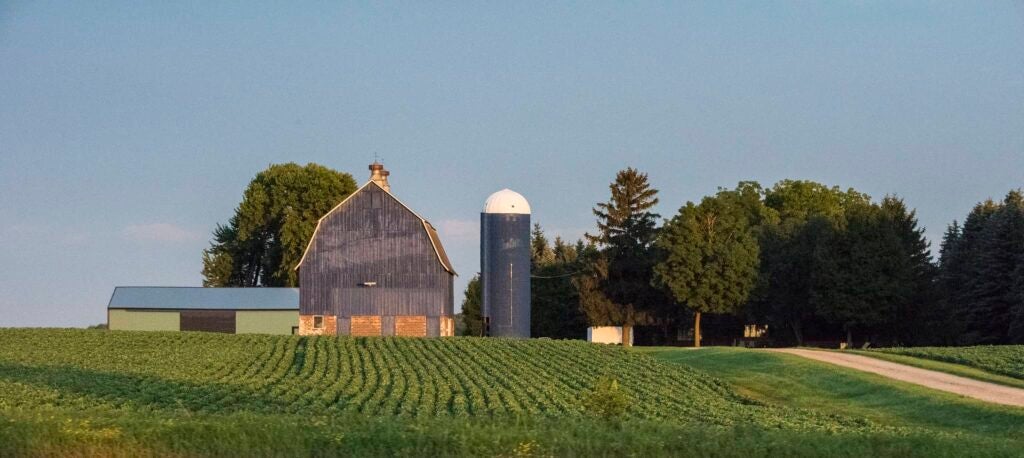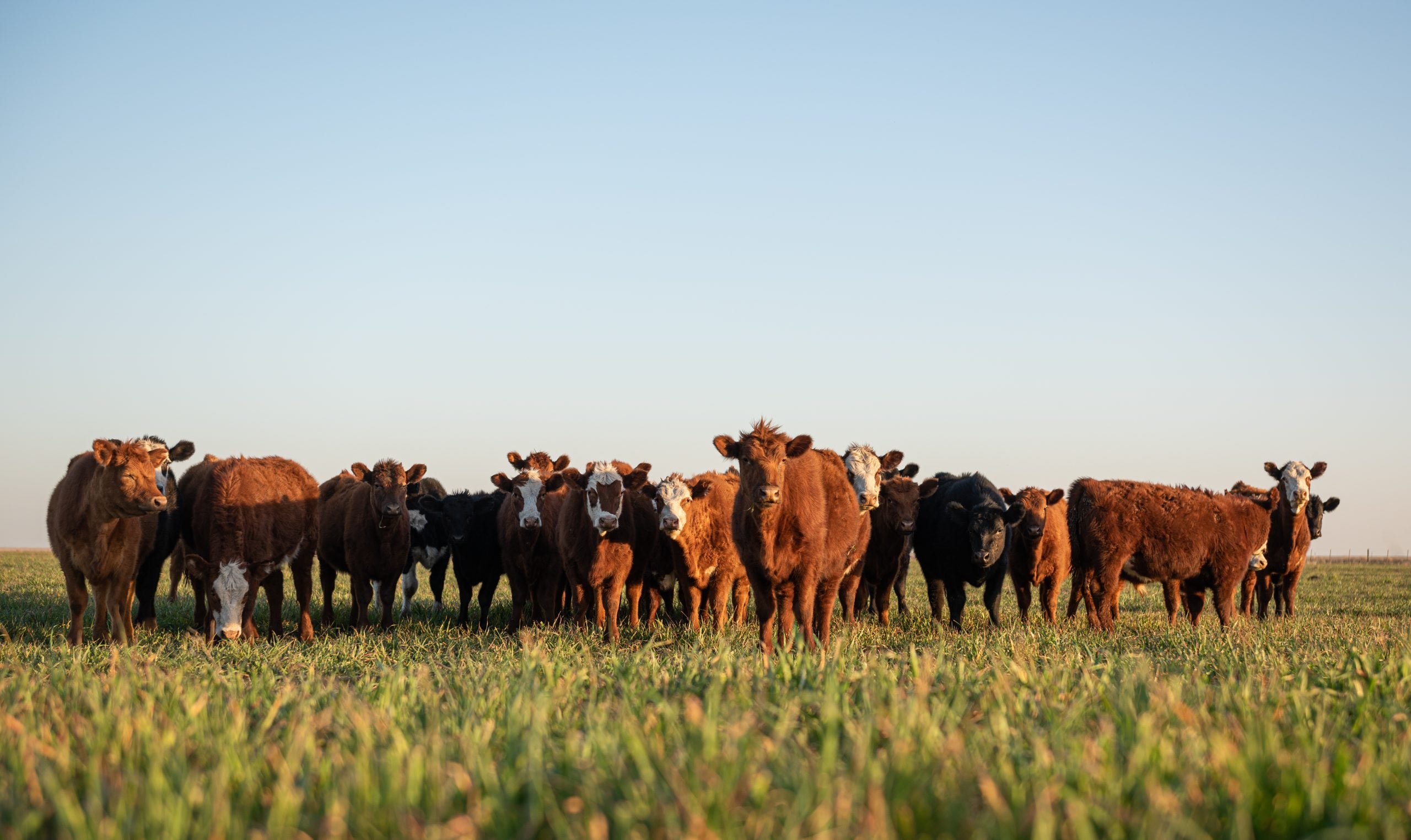Last year, the U.S. faced its fourth most costly year of extreme weather, contributing to more than $20 billion in agricultural losses. As this trend of increasingly extreme weather continues, modernizing agricultural insurance in the U.S. is a crucial step toward protecting farmers’ financial stability and reducing the risks they face when transitioning to climate-resilient practices.
Growing Returns
Modernizing agricultural insurance to strengthen farmers’ ability to adapt
A new resource hub empowers crop insurers and farmers to boost financial resilience to extreme weather
From extensive droughts across the Great Plains and back-to-back hurricanes damaging vegetable and citrus crops in the Southeast, the last two production seasons have demonstrated the intensifying damage of extreme weather on America’s farms. In 2023 alone, natural disasters caused nearly $22 billion in crop and rangeland losses. While crop insurance is a critical safety net for farmers, the growing impact of climate change underscores the need for proactive resilience strategies on the farm.
Recognizing this, Chubb and its crop insurance division Rain & Hail — the largest crop and agriculture insurance provider in the U.S. — has launched a new resource hub designed to equip farmers and crop insurance agents with essential tools, insights and advisors to increase on-farm resilience. Environmental Defense Fund Climate Corps fellow Carter Purcell led the development of the hub during her time at Chubb.
The new resource hub highlights the increasing need for comprehensive risk management solutions that not only protect farms financially in the short term, but also support long-term resilience.
Learn more about the relationship between crop insurance and resilience to extreme weather, and why it’s critical to provide solutions that support farmers’ short- and long-term financial resilience.
Cover crop costs vary significantly: new data from 83 Minnesota farms shows
Data on the financial impacts of climate-smart practices, like cover crops, can help inform farmers’ financial decisions when considering these practices. While cover crops can help improve soil health and make farms more resilient to extreme weather, farmers continue to have questions about the types of financial impacts cover crops will have on their operations. A multi-year collaborative project is collecting and analyzing data to help farmers and their advisers answer these questions.
How Farm Credit Canada uses partnerships to help farmers invest in sustainable practices
In 2022, Farm Credit Canada launched the Sustainability Incentive Program to recognize and encourage customers to implement sustainable farming practices. Through the program, FCC partners with agriculture industry-led sustainability initiatives that have established systems for verifying and measuring environmental outcomes. This model has allowed FCC to offer innovative financial incentives to farmers producing several different commodities.
I sat down with Curtis Grainger, FCC’s Director of Lending Products and Sustainability Programs, to learn more about Farm Credit Canada’s Sustainability Incentive Program.
Agricultural banks expect climate change to pose financial risks. Here are five strategies to help them adapt.
Climate change is projected to impact agricultural production worldwide, and 87% of agricultural finance institutions in a recent survey expect it to present risks to their business. Meanwhile, only 24% significantly factor climate change into their decision-making processes.
A new guide from EDF and Deloitte offers five strategies for agricultural finance institutions to manage climate risks and act on climate opportunities. These five strategies integrate climate into agricultural finance institutions’ existing risk frameworks and take a proactive approach to help farmers and ranchers adapt to climate change:
New analysis shows cover crops and no-till reduce crop insurance claims
The extremely wet spring of 2019 caused 14.2 million acres of cropland to go unplanted in the Midwest. Farmers across the region had flooded fields that kept them from getting equipment onto the fields to plant their crops. This resulted in over $4 billion of prevent-plant crop insurance claims, which assists farmers when weather conditions keep them from planting a crop altogether. Amidst these adverse weather challenges, farmers who were using cover crops and no-till reported facing less water on their fields, which allowed them to plant when their neighbors couldn’t.
A new study backs up these Midwest farmer stories with big data. Read More
Major banks are setting climate targets. What the agricultural finance sector needs to know.
Many major banks have set targets to reduce financed greenhouse gas emissions in their loan portfolios to zero by 2050 (also known as net zero targets). They join a growing movement of companies throughout the agricultural supply chain to set ambitious targets to reach net zero by 2050 to prevent the most severe impacts from climate change.
The Banking for Impact on Climate in Agriculture (B4ICA) initiative recently published “An introductory guide for net zero target setting for farm-based agricultural emissions” that shares best practices for banks to set net zero GHG emissions targets for their agricultural loan portfolios. The guidance helps banks setting agricultural sector emissions reduction targets as part of their commitments to the Net Zero Banking Alliance — an alliance of 122 banks representing 40% of global bank assets that have committed to aligning their assets with net zero GHG emissions by 2050 or sooner. Read More
Replicable revenue streams can help natural infrastructure projects receive State Revolving Fund financing

Natural infrastructure can provide protective barriers to reduce flood risk while also offering community green space and supporting green jobs. Louisiana GOHSEP, CC BY SA 2.0.
Authors: Vincent Gauthier (EDF), Tee Thomas (Quantified Ventures)
The Bipartisan Infrastructure Law will invest more than $44 billion in the Clean Water and Drinking Water State Revolving Funds, or SRFs, presenting a tremendous opportunity to finance natural infrastructure solutions that can improve water quality and protect communities against flooding. While natural infrastructure can be a cost-effective way to improve water quality and reduce flood risk, these projects have historically been difficult to finance through SRFs due to a lack of consistent repayment streams.
EDF and Quantified Ventures recently published a report that identified five replicable repayment streams that communities and conservation groups can use to access SRF financing for natural infrastructure such as wetlands, floodplain restoration, and riparian buffers. These repayment streams include stormwater utility fees, source water protection fees, and environmental markets.
Small North Carolina farms find profitability in climate resilience
Farms across North Carolina are experiencing more variable and extreme weather associated with climate change, including hotter nights and more frequent and severe rainfall. Small farms are adapting to these changes by adopting climate-resilient practices that help buffer weather extremes and improve soil health.
Measuring and communicating the financial costs and benefits of these practices is important to help more farmers adopt them profitably and find financial support for the transition. Cooperative extension agents — small farms’ closest technical advisers — will increasingly need to inform farmers about climate-resilient practices and their financial impacts.
Environmental Defense Fund and North Carolina Agricultural and Technical State University Cooperative Extension collaborated with three small North Carolina farms to measure the financial impacts of adopting reduced tillage, high tunnels and cover crops. The results are summarized in a new report and set of case studies. Read More
How banks can move toward net zero agriculture portfolios
Banks representing over 40% of global bank lending have joined the United Nations Environment Programme Finance Initiative’s Net Zero Banking Alliance and committed to align their lending and investment portfolios with zero net greenhouse gas emissions by 2050. By 2024, participating banks with substantial loan portfolios in agriculture will need to set net zero targets for the sector and rapidly embark on reducing emissions.
For this to be possible, banks must accurately measure the emissions they finance in agriculture. This is a particular challenge in agriculture, a sector that includes a vast array of different crops and livestock, farm sizes, and access to tools and technology. Read More













